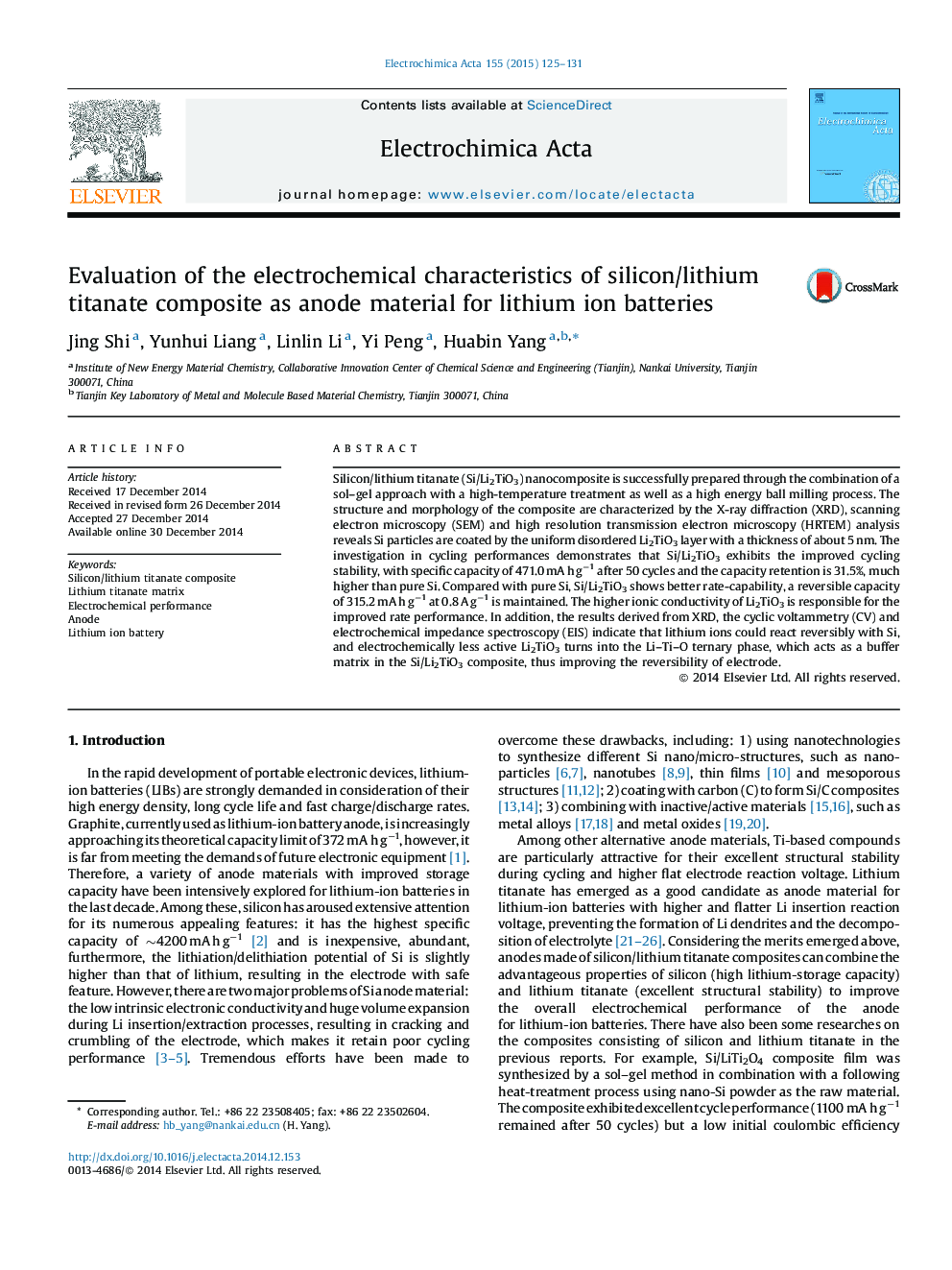| Article ID | Journal | Published Year | Pages | File Type |
|---|---|---|---|---|
| 184557 | Electrochimica Acta | 2015 | 7 Pages |
•Si/Li2TiO3 nanocomposite is prepared by sol–gel method.•A buffer matrix of Li–Ti–O ternary phase ensures good cyclic performance.•The lithiation and delithiation behaviors at different potentials are investigated.•Si/Li2TiO3 composite indicates excellent electrochemical performance than pure Si.
Silicon/lithium titanate (Si/Li2TiO3) nanocomposite is successfully prepared through the combination of a sol–gel approach with a high-temperature treatment as well as a high energy ball milling process. The structure and morphology of the composite are characterized by the X-ray diffraction (XRD), scanning electron microscopy (SEM) and high resolution transmission electron microscopy (HRTEM) analysis reveals Si particles are coated by the uniform disordered Li2TiO3 layer with a thickness of about 5 nm. The investigation in cycling performances demonstrates that Si/Li2TiO3 exhibits the improved cycling stability, with specific capacity of 471.0 mA h g−1 after 50 cycles and the capacity retention is 31.5%, much higher than pure Si. Compared with pure Si, Si/Li2TiO3 shows better rate-capability, a reversible capacity of 315.2 mA h g−1 at 0.8 A g−1 is maintained. The higher ionic conductivity of Li2TiO3 is responsible for the improved rate performance. In addition, the results derived from XRD, the cyclic voltammetry (CV) and electrochemical impedance spectroscopy (EIS) indicate that lithium ions could react reversibly with Si, and electrochemically less active Li2TiO3 turns into the Li–Ti–O ternary phase, which acts as a buffer matrix in the Si/Li2TiO3 composite, thus improving the reversibility of electrode.
Graphical abstractFigure optionsDownload full-size imageDownload as PowerPoint slide
